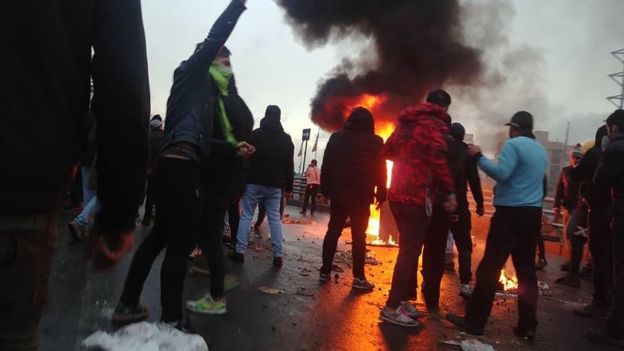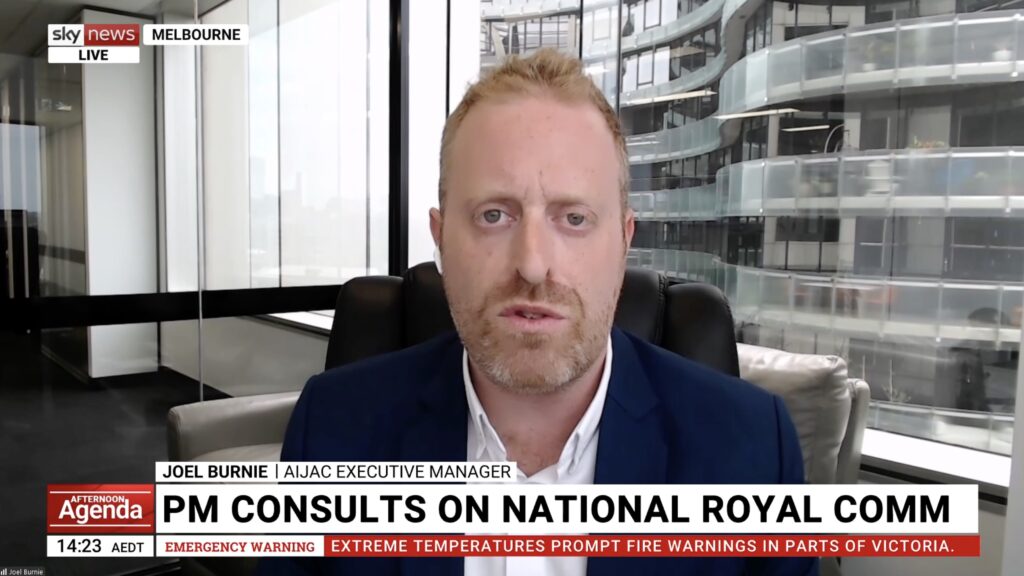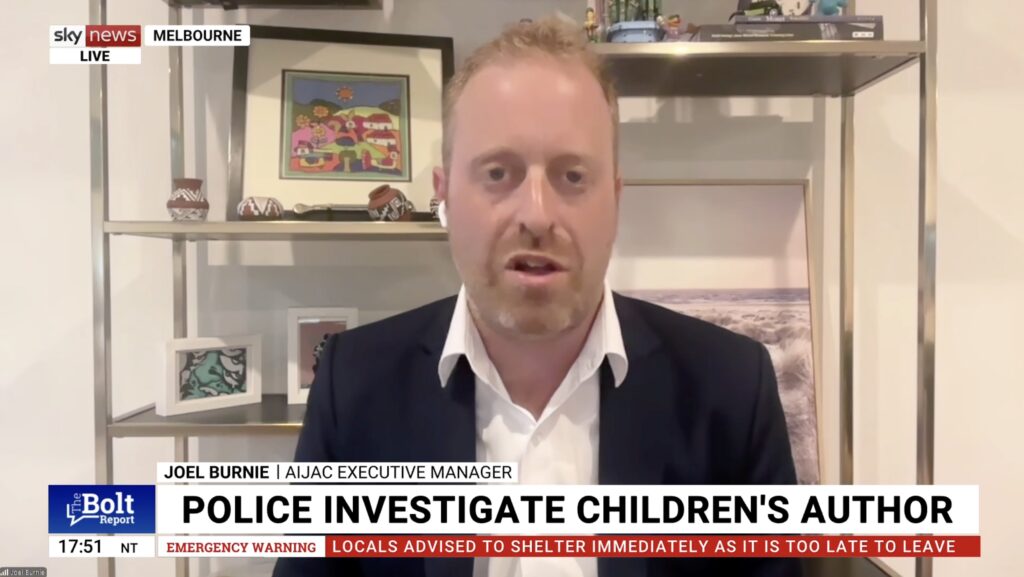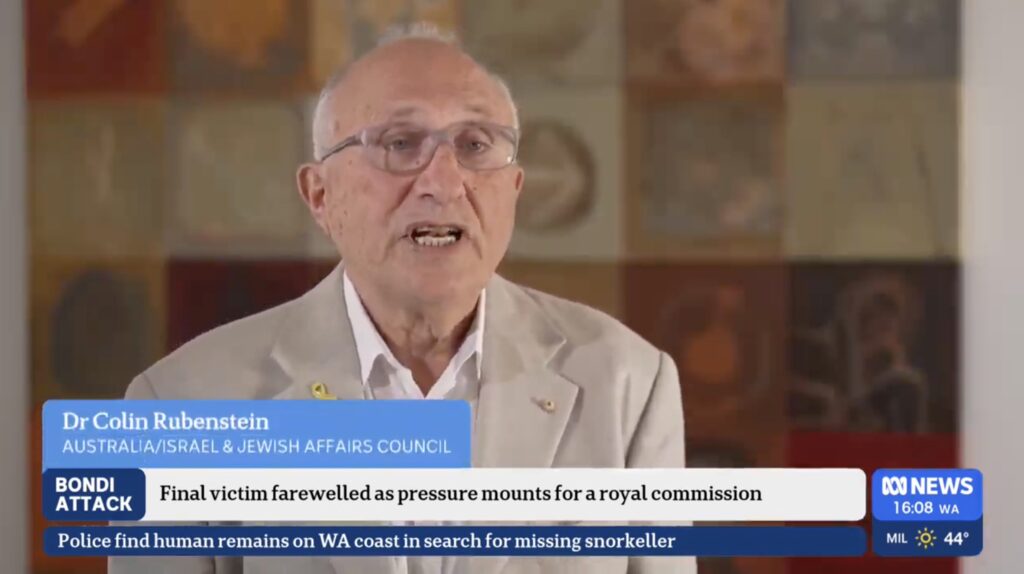UPDATES
The policy challenge of the Iranian protests
December 6, 2019 | AIJAC staff

Update from AIJAC
12/19 #01
This Update deals with some of the policy challenges – and potential mistakes – for other nations created by the unprecedently large mass protests in Iran, and the Iranian regime’s attempt to violently suppress them (the US State Department now estimates up to 1000 Iranian protestors have been killed). It also looks again at the threat of an Israel-Iran war.
We lead with a strong criticism of a European decision to essentially offer the Iranian regime an economic lifeline, even as it suffers a crisis of legitimacy at home, written by US national security columnist Eli Lake. Lake argues the European decision last week to expand INSTEX, a bartering system designed to help the Iranian regime evade US sanctions, and to double down on its support for this effort to provide economic relief to Teheran, is highly puzzling. He says that the Iranian people will likely not soon forget how European nations offered the regime a lifeline even as it is inflicting large-scale torment and violence on protesting Iranians. For his full argument, CLICK HERE. More on the problematic European stance and timing comes from Jonathan Tobin.
Next up is top Israeli strategic thinker Yossi Kuperwasser – who explores the preferred US response to both the protests and Iranian regional military escalations in a long report, of which only the Executive Summary is reproduced below. Kuperwasser argues that both the protest movements and the Iranian campaign of violent aggression, such as the attacks on Saudi oil facilities in September, are symptoms that the US “maximum pressure” policy, centred on sanctions, is working. He suggests the US response of refraining from responding militarily to Iranian aggression is correct, because to do so would allow the Iranians to control the conflict, while the protest movement is a sign this strategic patience while focussing on sanctions is paying off. For more details of Kuperwasser’s argument, CLICK HERE.
Finally, Jerusalem Post editor Yaakov Katz explores the Israeli military’s preparations for a war with Iran that it believes could begin at any time. He explores a scenario whereby Iran tries to repeat its surprisingly successful cruise missile and drone attack on Saudi oil facilities against an Israeli target and the dilemma Israel will then face in responding. Israeli military leaders know, he reports, that a limited response against Iranian proxies will not deter future attacks, while a more robust attack risks escalation to full-blown war. Yet if war is the outcome, a limited or symbolic Israeli retaliatory strike will leave Iran with much greater ability to strike back at Israel than a larger-scale Israeli attack on Iranian military assets. For this important report on Israel’s scramble to prepare for this dangerous scenario, CLICK HERE.
Readers may also be interested in…
- A surprisingly good summary of the threat to the Iranian regime posed by the protests comes from Michigan-based academic Mohammed Ayoob.
- The US government reportedly believe that Iran is secretly moving missiles into Iraq.
- A US government report that Iran’s foreign currency reserve problem is much worse than previously estimated
- Phillip Smyth of the Washington Institute for Near East Policy on how Iran has lost control of Iraq’s tribes.
- Lebanon expert Michael Young explores how the Lebanon crisis has led to Hezbollah, the local Iranian proxy, trapping itself in a no-win situation.
- For those who didn’t see it in today’s Australian Financial Review, Thomas Friedman has a good column on the unrest in Iran, and the anti-Iranian unrest in Iraq and Lebanon.
- Two top American security analysts, Peter Huessy and Bradley A. Thayer, warn of the dire consequences of Iranian proliferation.
- Some examples from the many stories and comments now appearing at AIJAC’s daily “Fresh AIR” blog:
- Jamie Hyams on some questions that need to be asked about last week’s episode of the ABC TV show “Q & A”.
- Oved Lobel discusses the threat of Iranian interference in the British election.
Why Is Europe Bailing Out Iran’s Regime Now?
Iranians protesting their repressive government need to know the world supports them.
By Eli Lake
Iranians have been protesting their regime since last month. Only in the last few days, however, has the world begun to learn the full scope of the repression they face.
There are the videos posted to social media and aggregated by news sites that show security forces firing on demonstrators. There are statements from leading Iranian opposition figures such as Mir Hossein Mousavi, one of the leaders of the 2009 uprising who has been under house arrest since 2011. There are headlines reading, “With Brutal Crackdown, Iran Is Convulsed by Worst Unrest in 40 Years.” There is the report from Amnesty International saying that at least 208 people have been killed.
So it’s puzzling that America’s European allies chose last weekend to announce that six more countries are joining a bartering system, known as Instex, designed to evade the U.S. sanctions on Iranian oil. Belgium, Denmark, Finland, the Netherlands, Norway and Sweden announced Saturday they were joining France, Germany and the U.K.
“Do they think we don’t see what is happening in Iran?” asked Alireza Nader, a senior fellow at the Foundation for Defense of Democracies who is closely tracking the unrest. “To push Instex at this moment reveals a remarkable lack of attention to human rights. I hope they come to their senses.”
The dissonance of the moment for Europe was captured Monday in a tweet by the U.K.’s ambassador to Iran, Rob Macaire. “Surprised by the tone of some reactions to this statement,” he wrote. “We continue to express concern about the human rights situation in Iran. But Instex shows we will work to support trade — which benefits all Iranians — as long as the JCPOA continues.”
Those last two sentences (the JCPOA is the Iran nuclear agreement, which Europe still honors but which the U.S. does not) amount to the kind of feel-good cliche many Westerners have been using for decades to justify trade not just with Iran but with other repressive regimes. It doesn’t stand up to scrutiny. Consider Iran’s banking crisis. Corruption and cronyism were causing bank failures as early as 2017 — before President Donald Trump’s administration re-imposed the crippling sanctions on Iran’s economy. Investment in Iran too often goes to the regime’s elites, not those who suffer from its mismanaged and now sanctioned economy.
But corruption is only part of the story. Iran also diverts its wealth to its foreign interventions. The U.S. State Department estimated in 2018 that Iran has spent $18 billion since 2012 in Iraq, Syria and Yemen, including paying the salaries of thousands of non-Iranian militia fighters. Iranians know this, too. A popular slogan among protesters is: “No Gaza, No Lebanon, Our Lives Are for Iran.”
 Iranians gather to protest against situation in Iran on the Parvis des droits de l’Homme in Paris on December 2, 2019. They might also be protesting European governments, which have chosen to help strengthen the regime at the expense of the Iranian people.
Iranians gather to protest against situation in Iran on the Parvis des droits de l’Homme in Paris on December 2, 2019. They might also be protesting European governments, which have chosen to help strengthen the regime at the expense of the Iranian people.
It’s too soon to say whether the latest protests in Iran are the beginning of the end of the Islamic Republic. What’s clear, however, is that the current government is facing a crisis of legitimacy. Ten years ago, when hundreds of thousands of supporters of Mousavi took to the streets, it was largely the urban, educated classes expressing their fury about a stolen election. Today, the unrest in Iran has spread to the working poor. Even Kurdish parties — which have traditionally pursued their own agenda — are now working with organizers of the national movement.
Mousavi himself captured this crisis in legitimacy with his statement last weekend, comparing the widespread shootings of demonstrators to the 1978 killings that preceded Iran’s 1979 Islamic revolution. “The murderers of ’78 were representatives of a non-religious government and the shooters of 2019 are representatives of a religious regime,” Mousavi said. “There the chief commander was the shah and here today is the supreme leader with absolute powers.”
Perhaps Europeans believe the supreme leader has more staying power than the shah did. But if history is any guide, Iranians will not soon forget the violence and torment their regime has inflicted on them. Nor will they forget those foreign powers that offered that regime an economic lifeline.
Eli Lake is a Bloomberg Opinion columnist covering national security and foreign policy. He was the senior national security correspondent for the Daily Beast and covered national security and intelligence for the Washington Times, the New York Sun and UPI.
The United States and the Iranian Policy of Escalation (Executive Summary)
Brig.-Gen. (res.) Yossi Kuperwasser

A billboard displayed in Tehran in May 2019 and posted on Supreme Leader Khamenei’s webpage showing U.S. and Israeli ships ablaze in Persian Gulf waters overseen by Jerusalem’s Dome of the Rock shrine.
- The wave of demonstrations in Iran following the regime’s decision to raise the price of gasoline by 50 percent is the most important manifestation of the impact of the “Maximum Pressure” policy of the United States toward Iran. It reflects the shortage of resources available to the regime due to the shrinking of its oil exports income and the widespread animosity of the Iranian people toward the Islamic regime, and it adds to the challenges Iran is facing in maintaining its grip over two of its most important assets would-be colonies, Iraq and Lebanon.
- Even if the Iranian regime manages to repress the popular outrage against it on all fronts, the recent events, combined with Israeli continuous attacks on Iranian military targets in Syria and allegedly also in Iraq and in Lebanon, and the imposition of even more American sanctions on Iran, put the Mullahs’ regime in Tehran under unprecedented pressure, vulnerability, and concern.
- The harsh Iranian response was revealed in the impressive military attack on the Saudi oil facilities in Abqaiq and Khurais on September 14, 2019, and the resumption of uranium enrichment in the Fordow deep underground facility. The Iranian offensive steps reflected the Iranian leadership’s frustration after the failure of its escalating brinksmanship policy. That desperate policy included attacks against American allies such as Israel, adopted after the “maximum pressure” sanctions were applied in May 2019 in an attempt to force the United States out of the “comfort zone” of a tough sanctions regime.
- After the attack on the Saudi oil facilities, the United States understood the nature of this familiar Iranian trap and its twisted logic and was careful to avoid retaliation. This American policy, which seemed to many as counterintuitive, earned President Trump considerable criticism, including from Israeli Prime Minister Netanyahu.
- As the policy of escalating brinksmanship backfires on Iran, and with the growing tensions with the IAEA after the agency confirmed Israeli claims about the presence of unaccounted for and undeclared enriched uranium in Turquzabad, it is not clear what decisions will be taken by the Iranian leadership. The extreme radical elements in it may call on Iran to take even higher risks. On the other hand, the realistic radicals in the Iranian regime, led by President Rouhani, may advocate a resumption of negotiations with the United States, fearing that as time goes by, the opening position of Iran – that is already weak – may become even weaker.
- The Iranian regime believes it can pursue its goals of survival, spreading the Islamic faith, and preventing foreign intervention in its area of influence, in spite of its limitations, as long as it can shape the conflict with the United States and its allies as a war of attrition of which it has built up its capabilities for a very long time. Yet the American cautiousness may make these capabilities less relevant.
(The above is the Executive Summary of a much longer report, which can be read in full here).
Editor’s Notes: How the Israel-Iran war might begin
In the back of everyone’s mind there will be a constant and nagging question mark over what happens next. Everyone that is, except for Iran.
By YAAKOV KATZ
 AN ISRAELI F-35 fighter jet gets ready to take off in the Negev. Will it soon fly to Iran?
AN ISRAELI F-35 fighter jet gets ready to take off in the Negev. Will it soon fly to Iran?(photo credit: MARC ISRAEL SELLEM/THE JERUSALEM POST)
The missiles will come in low, after being in the air for almost an hour, and when they hit, they will be coming just over the horizon. People who witness the attack will remember later that the missiles didn’t fall from the sky. They flew at their target straight, like a bullet.
The drones will hit just a few minutes later. They will have been flying at low altitudes for longer, taking off in Iraq, crossing into Syria, and then across the border into Israel.
The “swarm” of drones and cruise missiles – as it will later be referred to – will have caught the country by surprise. By the time they strike, the target will be less relevant – the Haifa oil refinery, an apartment building in Kiryat Shmona, or a school in Katzrin.
This scenario, while fiction for now, is one that the IDF top brass is talking about on a regular basis these days. It is being played out in the minds of IDF generals and intelligence officials, responsible for watching Iran’s every move, from Tehran all the way to its proxies’ bases in Yemen, Iraq, Syria and the Gaza Strip.
The model is very similar to Iran’s attack against the Aramco oil facility in Saudi Arabia in September: within the span of 17 minutes, 18 drones and three low-flying missiles hit the facility with amazing precision. The ability to launch a coordinated cruise missile/drone attack that hit its target with precision (except for a few cruise missiles that missed) was an impressive feat. That Iran has this capability came as a surprise to many in America and Israel’s defense establishments.
That Iran would like to attack Israel is not a secret. Two weeks ago, an Iranian-backed militia in Syria fired four Fajr-5 rockets at the Hermon Mountain in Israel. The rockets were intercepted by Iron Dome batteries.
In August, Israel struck an Iranian-backed cell planning to launch explosives-laden drones into Israel from Syria. After both incidents, the Israeli Air Force carried out extensive retaliatory strikes against Iranian targets in Syria.
This question is at the heart of discussions within the defense establishment, and there are a number of possible answers, each with its advantages and disadvantages.
 Iranian cruise missiles like this one performed better than expected in the attack on Saudi Arabia’s oil facilities in September.
Iranian cruise missiles like this one performed better than expected in the attack on Saudi Arabia’s oil facilities in September.
IF FOR example the cruise missiles and drones are launched from Syria, Yemen or Iraq, the easiest move is for Israel to simply retaliate against the cell that launched them, assuming it is able to quickly locate and identify the attackers.
On the other hand, while such a retaliation has tactical value – denying the cell the ability to continue firing missiles – what does it say about Israeli deterrence? If Iran knows that it can strike at Israel via proxies from other countries and not pay a direct price, what will stop it from continuing?
For that reason, another option would be for Israel to strike back directly at Iran and to deliver a decisive blow against the regime that would make the clerics there understand that there is a personal price to be paid for attacking Israel.
How would Israel do that?
Israel will likely need to rely on its Air Force, the backbone of which – the F-35 Joint Strike Fighters, F-16I Sufas and F-15I Raams – are specially configured for long-range bombing operations.
With some refueling, the planes would be able to fly to Iran, attack their targets and return. There are different routes: flying directly over Jordan and Iraq, over Saudi Arabia and Iraq, or along the Turkish-Syrian border. All have their advantages and disadvantages. Some are longer while others are more dangerous.
Israel could potentially use drones in such an attack. According to foreign reports, the Heron TP – Israel’s largest drone with the wingspan of a Boeing 707 – has the ability to carry missiles. How big and how much damage they can cause remains unknown. That is why while the drones – if they are even an option – might minimize the risk to pilots, their ability to cause extensive damage is limited.
For this reason, for example, Avigdor Liberman when he was defense minister, and Naftali Bennett before he became defense minister, both pushed for the IDF to develop additional long-range capabilities. Liberman tried to establish a missile corps in the IDF. At the time, the focus was on short-to-medium range that was not big enough to reach Iran, but that would have been the next stage.
Prior to being appointed defense minister, Bennett also raised the issue in security cabinet meetings and tried to push the military to think creatively about how it can deal decisive blows to far away enemies like Iran. Now, as defense minister, he can try to implement his vision.
EACH RETALIATORY option will directly impact the scope of the conflict that will follow. If, for example, Israel goes with option 1 and limits its strike to the missile launchers in Iraq, Syria or Yemen, there would likely be almost no response. Iran would understand that Israel needed to vent and would accept the follow-up blow.
If Israel goes with option 2 and strikes in Iran, an unprecedented move, it could lead to a regional war. Iran can activate its militias based in Syria, Islamic Jihad in the Gaza Strip and, of course, Hezbollah in Lebanon which has the ability to launch over 1,000 rockets and missiles a day against Israeli targets.
In theory, Iran also has the potential to launch its own long-range ballistic missiles toward Israel. While Iran has developed an impressive ballistic missile capability, they have never really been tested in combat. Will they be able to make the flight to Israel and accurately hit their targets? Maybe, maybe not. Either way, they would first have to make it through the Arrow, Israel’s ballistic missile defense system.
What would Israel target in such an attack against Iran? For purposes of deterrence, it might be enough to strike at a single symbolic target, like a military base. On the other hand, if you know that a massive war is coming, maybe it would be the right time to strike additional targets at the same time – nuclear facilities, missile depots and launchers, air force bases, navy ships. If there is already going to be a war, it might as well be worth it.
The same could be argued about Hezbollah. If the military assessment is that Hezbollah would attack Israel after such a strike, then the IDF would need to consider launching a preemptive strike against Hezbollah and hitting targets – its long-range missile arsenal, assuming Israeli intelligence knows where it is stored as an example – at the same time that an attack is launched against Iran. At least this way, if war with Hezbollah comes, Israel will have limited the Lebanese-based group’s ability to inflict damage.
WILL ANY of this happen? That is impossible to know. Based on the frequency of visits by top US military officials in the last few weeks – Chairman of the Joint Chiefs of Staff Gen. Mark Milley, head of the US Air Force Gen. David Goldfein, and CENTCOM chief Gen. Kenneth McKenzie were all here last month – there is coordination going on behind the scenes between the Pentagon and the IDF.
The same can be understood from the two phone calls Prime Minister Benjamin Netanyahu recently had with President Donald Trump, during which they discussed the threat from Iran as well as other “critical” regional issues.
The problem, though, is that anything Netanyahu does today will be seen as politically driven. If there is an attack in the coming weeks after Israel has gone to another election, then however Israel responds will be looked at through the prism of Netanyahu’s legal predicament. Did he decide to go to war to try and postpone his trial, or did he decide to contain a devastating attack to avoid a war that would incur casualties and possibly also a political price?
In the back of everyone’s mind there will be a constant and nagging question mark over what happens next. Everyone that is, except for Iran.





